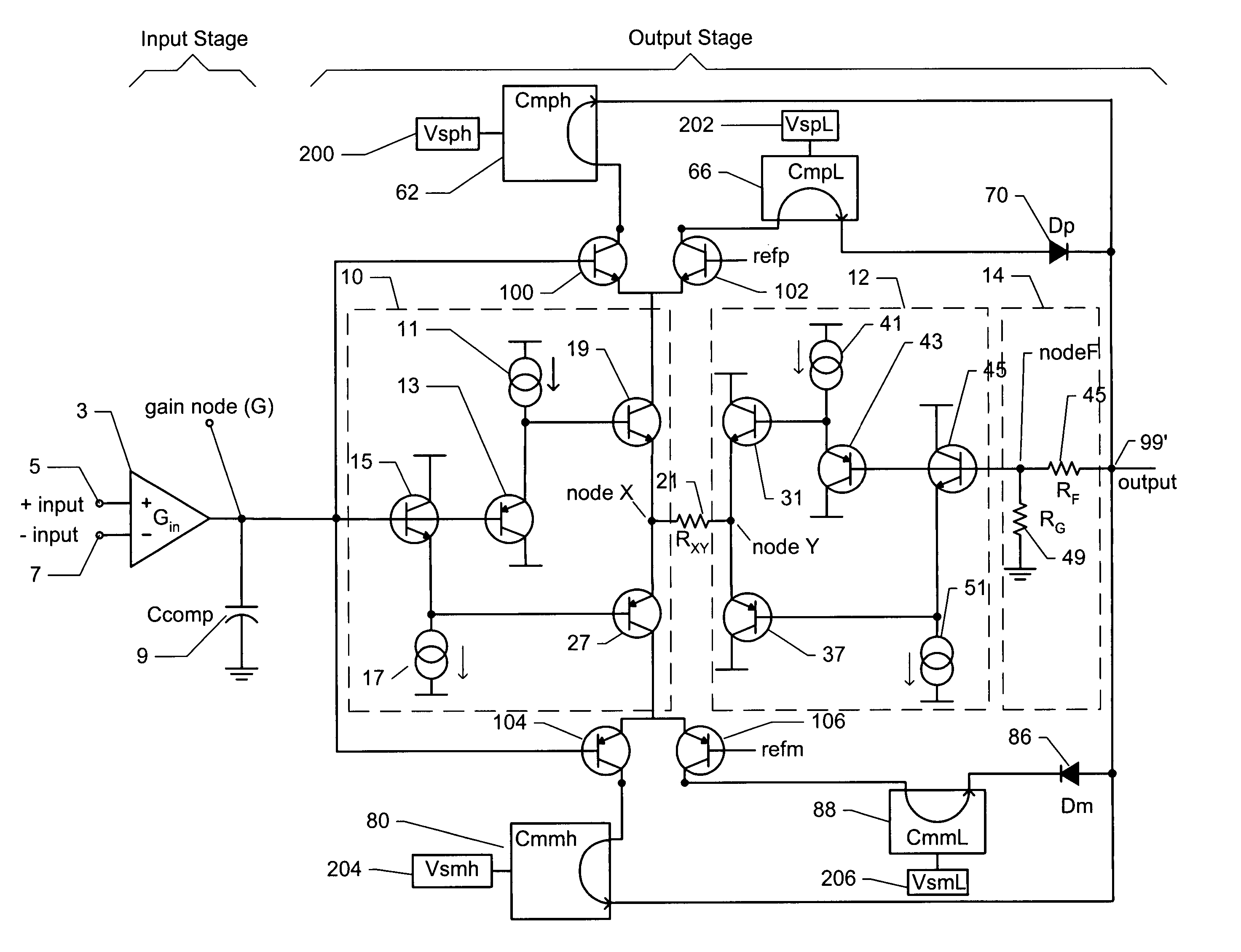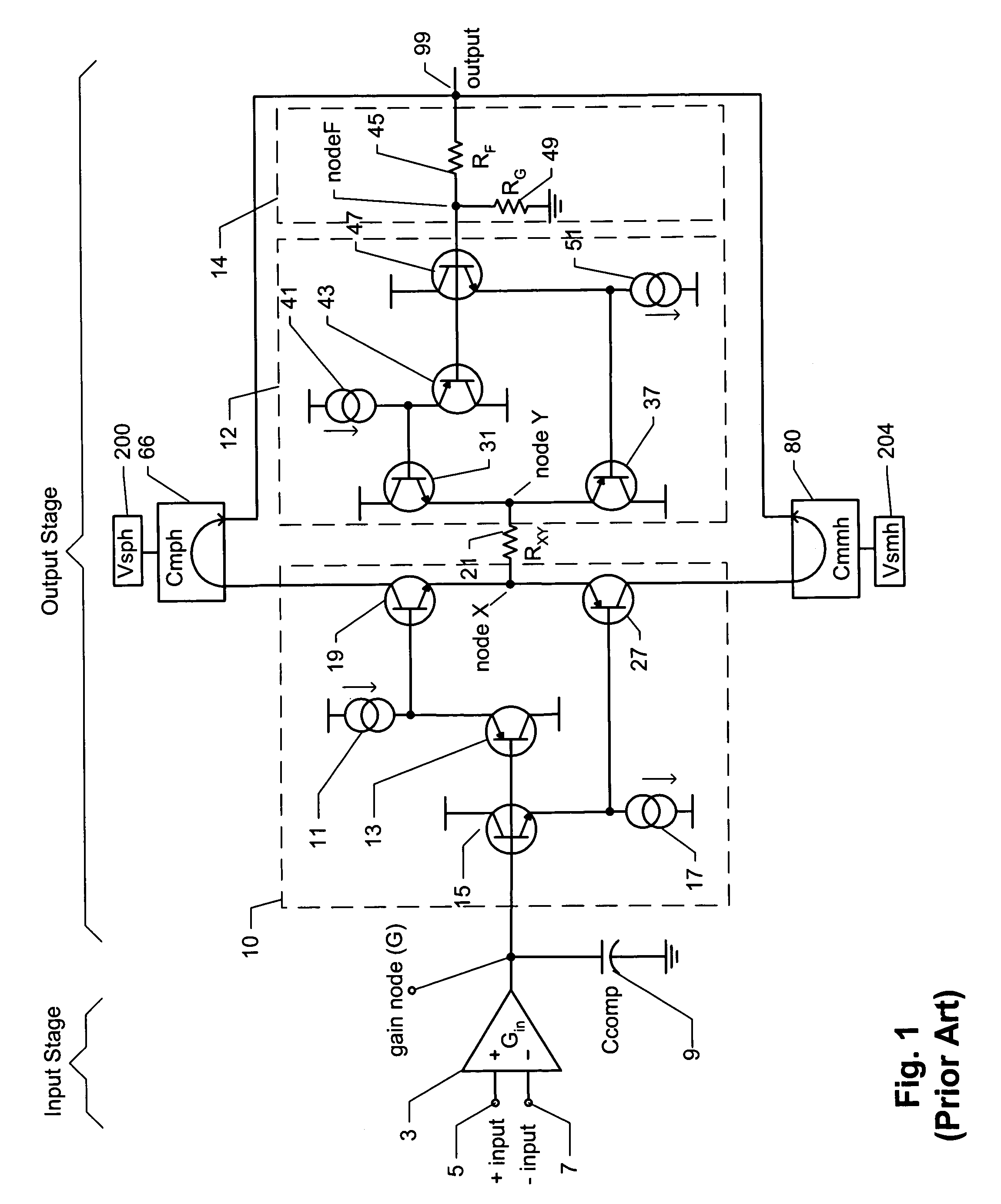Class G-amplifiers
a class g amplifier and amplifier technology, applied in the direction of dc-amplifiers with dc-coupled stages, differential amplifiers, amplifiers with semiconductor devices/discharge tubes, etc., can solve the problems of wasting a large amount of power, inefficient class-ab amplifiers, and wasting standard class-ab output stages
- Summary
- Abstract
- Description
- Claims
- Application Information
AI Technical Summary
Benefits of technology
Problems solved by technology
Method used
Image
Examples
Embodiment Construction
[0019]The present invention relates to Class-G amplifiers. The so-called Class-G amplifier approach uses two sets of power supplies, including a lower voltage supply (or supplies) which provides the majority of the output and quiescent currents, and a higher voltage supply (or supplies) which provides the output current only for the occasional signal peaks. The amplifier switches between supplies with signal demand. Prior to discussing Class-G amplifiers, it is useful to first describe a possible implementation of a Class-AB amplifier with reference to FIG. 1.
[0020]The Class-AB amplifier of FIG. 1 includes a differential input stage 3, which has a non-inverting input 5 and an inverting input 7. The output of the input stage is labeled gain node (G). A compensation capacitor 9 (Ccomp) is preferably connected between the gain node (G) and ground, to reduce and preferably eliminate oscillations at the gain node. Everything to the right of the input stage 3 can be considered an output s...
PUM
 Login to View More
Login to View More Abstract
Description
Claims
Application Information
 Login to View More
Login to View More - R&D
- Intellectual Property
- Life Sciences
- Materials
- Tech Scout
- Unparalleled Data Quality
- Higher Quality Content
- 60% Fewer Hallucinations
Browse by: Latest US Patents, China's latest patents, Technical Efficacy Thesaurus, Application Domain, Technology Topic, Popular Technical Reports.
© 2025 PatSnap. All rights reserved.Legal|Privacy policy|Modern Slavery Act Transparency Statement|Sitemap|About US| Contact US: help@patsnap.com



